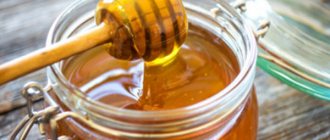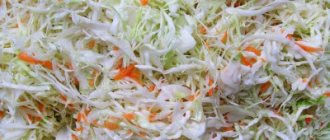A midwife performs the first toilet for a newborn baby. The baby is weighed, body length is measured, and the skin, eyes and navel are treated.
To care for a child in the maternity hospital, only sterile materials (cotton wool, cotton swabs, diapers) and sterile solutions are used. Thorough hand cleaning of medical personnel is very important. All child care procedures (except for washing and swaddling) are carried out only by a nurse and a pediatrician.
Currently, the tactic of “minimum manipulation” is increasingly being practiced in maternity hospitals. It provides that the daily treatment of children in the maternity hospital is not carried out for everyone, but only when necessary.
Toilet skin
In the delivery room, the midwife treats the skin with a cotton ball soaked in vegetable oil or vaseline oil. During this procedure, it removes mucus, blood, meconium, and large accumulations of vernix.
In the subsequent days of stay in the maternity hospital, the baby’s skin is examined daily by medical personnel and treatment occurs only if necessary. Indications for skin treatment in the maternity hospital include: redness of the folds, the appearance of inflammatory elements on the skin, and diaper rash.
The mother only needs to wash the baby under running water. You should not overuse wet wipes in the maternity hospital, as they often cause allergic reactions on the skin of children.
When do they fester?
Souring and formation of pus can be caused by infection.
In many children, the effect of suppuration of the eyes is observed from the first days after birth. One of several options can explain this reaction:
- physiological characteristics of the body;
- generic or other form of infection;
- consequence of an allergic reaction;
- foreign body getting into the eye;
- conjunctivitis or dacryocystitis.
It is not difficult to determine when a newborn’s eye is festering. The baby experiences an accumulation of pus in the inner corners of the eyes, the eyelashes become stuck together from purulent discharge, and the upper eyelid may become red and swollen. Because of this, the child is capricious, often cries and rubs his sore eyes with his hands. Such discharge not only brings temporary discomfort to the baby, but can also cause poor appetite and troubled sleep. Sometimes, with severe suppuration, newborns develop a fever.
Treatment of dacryocystitis
The diagnosis of such a disease can only be made by a specialized ophthalmologist. If the doctor has confirmed the presence of this disease, therapy alone will not do. This disease is caused by blockage of the nasolacrimal duct. For treatment, a group of medications will be prescribed, in the form of ointments or eye drops. The doctor will also teach the mother auxiliary massage, which the baby will need to do every 1.5-2 hours. With the help of massage manipulations, the accumulated pus will be released faster.
Therapy for conjunctivitis
At the first symptoms of the disease, you should consult a specialist.
This disease in newborns can occur for several possible reasons. But parents need to remember that the disease is contagious, with the only exception being the allergic type of disease. The first rule for treating this disease is to go to an ophthalmologist. Without his examination and detailed instructions, no therapeutic steps can be taken.
To treat bacterial conjunctivitis, your doctor may prescribe warm compresses made with herbs or medications. Saline solution is often prescribed. Prepared: 0.5 tsp. sea salt is diluted in a glass of boiled water. Pipette 2 drops into each eye.
Allergic conjunctivitis is a reaction of a child’s body to various irritants, and especially often occurs in the spring. As a rule, this is an allergy to flowering, dust or a foreign body, something that has entered the visual organ. It is treated with antihistamines, which are sold in the form of drops that need to be dripped into the eyes, and ointments placed in the lower eyelid. To alleviate souring, the child’s eyes can be wiped with Furacilin and smeared with Miramistin. The acute form of the disease can occur at any time of the year and is often treated with medications containing an antibiotic. Most often these are eye drops that are given to the baby when the eyes become very sour.
Navel treatment
In the delivery room, the midwife places a sterile plastic clamp on the umbilical cord (clothespin). Treatment of the umbilical cord stump is usually carried out with ethyl alcohol 70% and a solution of Potassium permanganate 5% or a solution of Diamond Green 1%. After treatment, a sterile bandage is applied to the umbilical cord stump. This bandage is removed from the navel during the first examination in the children's department.
Daily umbilical cord care in the maternity hospital includes treatment with a 3% Hydrogen Peroxide solution and then a 1% Diamond Green solution. This procedure is carried out by a pediatrician or nurse. But now, more and more often, in maternity hospitals, daily treatment of the navel is not carried out at all. The umbilical cord stump itself mummifies and falls off.
How to wash a child's eyes with conjunctivitis?
This disease occurs quite often in children.
Its etiology may be a viral or bacterial infection. Often, various allergens can lead to this condition. Rinsing your child's eye can relieve and sometimes completely eliminate the following symptoms:
- Hyperemia of the mucous membrane of the eye with a pronounced vascular pattern.
- The appearance of dirty yellow crusts after sleep.
- Difficulty opening the eyelids due to their sticking together.
- The appearance of a fine blistered rash in the upper or lower eyelid area.
In addition to dosage forms in the form of drops and ointments, the ophthalmologist prescribes eye rinsing using antiseptic solutions.
For a child of the first year of life, rinsing is most often prescribed:
- Using a decoction or water infusion of chamomile and calendula.
- Furacilin or Sodium chloride.
- A weak solution of potassium permanganate works well.
- Miramistin.
- Boric acid can be used with caution, following the preparation method.
Eye treatment
In the delivery room, the midwife prevents infectious eye diseases. To do this, a solution of Sulfacyl sodium 20% is instilled into each eye three times with an interval of 10 minutes. Other medications are sometimes used: Tetracycline or Erythromycin eye ointment, Silver Nitrate solution 1%, Protargol solution 1% or Collargol solution 1%.
Subsequently, the eyes are treated if there are visible contaminants. For this, sterile distilled water and cotton balls are used. Each eye requires its own ball. Hand movements when rubbing the eyes should be directed from the outer corner of the eye to the inner.
Rules of care
Soft cotton balls are used for the procedure.
You need to wash your newborn's eyes like this:
- Taking the baby in your arms, you should turn its head towards the eye that needs to be treated.
- Soak the prepared cotton swab in boiled water and squeeze it out carefully so that the liquid does not get into your eyes.
- The manipulation should be carried out from the outer to the inner corner of the eye.
- Wipe each eye with a new cotton swab.
What to wipe your eyes with?
When a child’s eyes are constantly festering, they will have to be treated several times a day. But if such procedures do not bring relief within 2 days, you will need the help of an ophthalmologist. Options:
- Rinse the eyes lightly - dissolve 1 tablet in 200 ml of boiled, lukewarm water, wait for complete dissolution and, soaking a cotton swab in the solution, treat the eyes.
- When the eye becomes infected, you can treat it with chamomile. This healing plant has a soothing and anti-inflammatory quality, which is especially beneficial for eye irritation.
- You can wipe it with tea leaves. Do not forget that the tea must be of high quality, without aromatic additives and preservatives.
- Rinse the baby's eyes with a properly calculated solution of potassium permanganate. Use several crystals for the solution, wait until completely dissolved. The color of the liquid should have a pale pink tint and remain almost transparent. Treat with potassium permanganate only in emergency cases. It is advisable to do this in the presence of a visiting nurse.
Pediatricians around the world are refuting the myth that you should use breast milk when rinsing your eyes. This treatment promotes the proliferation of microbes, which can only worsen the condition of the inflamed eyes.
Daily manipulations
The child's eyes are treated with cooled boiled water.
The hygienic procedure for caring for a child’s eyes should be carried out with clean, boiled water. To do this, it is better to boil it first so that it has time to cool to a comfortable temperature for washing. It is better to use only cotton wool, and not its analogues in the form of cotton swabs or disks. They have a dense, hard structure that can damage the delicate skin of a child’s eyelid. If there are no obvious signs of souring or putrefaction, you should not wash the baby’s eyes with tea, herbal decoction or soap; in this case, clean, sterile water is sufficient. Cosmetic washing or manipulation with a wet wipe is strictly prohibited. Carry out the rinsing procedure every morning and evening before bed.
If, instead of a small whitish ball in the inner corner of the eye (which is considered normal, when parents bathe and wash the baby, this disappears), abundant whitish clots are observed, the eyelid becomes covered with a purulent crust and swells, an examination by a pediatrician will be needed. Do not clean dry crusts; at most, drip saline solution into your eyes. These signs have diseases such as conjunctivitis or dacryocystitis. Only a qualified specialist can make an accurate diagnosis and prescribe adequate treatment.
Cleaning the nasal passages
Often after childbirth, children have difficulty breathing through their nose. This is due to swelling of the mucous membrane, accumulation of mucus or traces of blood in the nasal passages. If there is difficulty breathing (the baby sniffles), the nasal passages are cleaned with cotton wool soaked in petroleum jelly.
If, after clearing the nose, the sniffling persists, the nurse can drop vasoconstrictor drops into the nose to relieve swelling. As a rule, within 2-3 days the swelling subsides and nasal breathing is restored.
Natalya Volkova, neonatologist, especially for the Mirmam.pro
How to wash your eyes with tea: recipes for using tea leaves, lotions for fatigue, benefits and harms
To get a quick effect when washing your eyes with tea, you should use only fresh tea leaves. It contains tannins - phenolic compounds, tannins that benefit the body. Also, fresh tea has anti-inflammatory and antibacterial effects.
The use of tea leaves does not always have a beneficial effect on health. If there are some contraindications, side effects may develop.
- 1. Eye wash procedure 1.1. For adults
- 1.2. For babies
Eye wash procedure
The procedure for washing the organs of vision helps eliminate swelling of the eyelids, stops the inflammatory process, and improves the condition of the skin.
For adults
Step-by-step description of how to wash your eyes:
- 1. Pour 2 tsp. black tea 250 ml boiling water.
- 2. Leave for 15 minutes (no more).
- 3. Cool until warm.
- 4. Soak a cotton pad in the tea leaves, tilt your head down and wipe your eye from the inner corner to the outer.
- 5. For each wipe you need to use a new cotton wool.
- 6. After the procedure, blot your eyelids with a clean napkin.
It is recommended to use black tea for brewing, although you can add 1 tsp. green. It is important to take the product not in bags, but loose, and without additional components.
For babies
In newborn children, purulent discharge forms in the corners of the eyes, which must be removed with extreme caution. Suppuration of the eyes in children at this age occurs due to bacterial, infectious, allergic conjunctivitis. Pediatricians recommend using tea leaves to treat these conditions. Before using it, you should consult your doctor.
For conjunctivitis of the organs of vision in infants, rinsing is carried out by brewing strong black tea. The preparation method is described above. You need to dip a small piece of sterile cotton wool into the liquid and gently wipe the baby’s eyes.
Recipes for using tea leaves
You can use tea leaves not only to wash your eyes with tea. Recipes for using this product are described below:
| Name and indications | Preparation | Application |
| Anti-irritation lotions | Lotions should be made cold. The use of both black and green tea, as well as various medicinal herbs (chamomile, linden, cornflower), is encouraged. You need to brew the raw materials in equal proportions, cool, moisten the cotton wool in the prepared solution | Place lotions on eyelids for 15 minutes |
| Lotions for fatigue | Tea lotions are made from tea bags. Place 2 sachets in a cup of boiling water, then remove and squeeze out excess liquid. | When the bags have cooled, place them on closed eyelids for 15 minutes. You can also soak a cotton pad in the tea leaves and apply it to your eyelids for 5 minutes. After the procedure, you should apply cream to the skin |
| Tea solution for instillation (treatment of infectious diseases) | Pour 2 tbsp into a cup. l. tea, leave until cool | Drop 2-3 drops with a pipette three times a day |
| A weak tea solution to relieve severe watery eyes | Pour a weak tea solution into a bowl (1 teaspoon per cup of tea) | Place your face in the container and blink |
| Mask to eliminate swelling of the eyelids | Pour 100 ml of boiling water over 2 tbsp. l. raw materials. Cool, drain the water through a strainer | Apply the mask to your eyelids and leave for 5 minutes. Rinse with warm water |
| Eyelid moisturizing mask | Add a couple of spoons of sour cream to the above recipe, wrap the squeezed tea leaves in gauze | Place on eyelids for 5 minutes |
| Contrasting tea to firm the skin and refresh the look | You need to prepare tea and divide its volume equally. Place the container with the first part in the refrigerator until ice forms. Heat the second part until warm. | Soak a cotton swab in the infusion and apply to the eyelids for 1 minute. Then wipe with an ice cube. Carry out the contrast procedure several times |
You should use the above-described products with the suggested dosage only if you are familiar with the side effects and contraindications. Before using traditional medicine recipes, you should consult an ophthalmologist.
Benefits and possible harm
Tea is an effective remedy for preventing wrinkles, relieving irritation and swelling of the eyes. Thanks to the components contained in black tea, the brew tightens the skin and has a calming effect.
However, when using this product, you should consult your doctor and choose only a natural product (large-leaf tea leaves). Poor quality products can cause harm to health. Granulated tea contains dust, which can cause irritation to the mucous membrane of the organs of vision.
Washing procedures are not carried out at night (tea lotions provide a tonic effect). It is not recommended to place cotton wool on the eyelids for more than 15 minutes: otherwise, the skin may stain.
Indications
Few people know that diseases that are transmitted by airborne droplets develop well and affect the organ of vision. Moreover, it is often from this area that many respiratory and allergic diseases begin. In general, inflammation in the eye area can be caused by various factors. Therefore, the most common in children are:
- Viral conjunctivitis;
- Bacterial conjunctivitis;
- Allergic conjunctivitis;
- Inflammation of the lacrimal sac (dacryocystitis);
- Eye irritation due to the use of drugs;
- Keratoconjunctivitis;
- Traumatic conjunctivitis.
Each of them is combined with symptoms such as pain in the eyes, a feeling of sand or a foreign body, redness of the conjunctiva, secretion of secretions of varying consistency and color. With viral and bacterial discharge, they have a fairly dense structure, which is why children’s eyelids often stick together after sleep. Attempts to unstick them end in tissue trauma and deeper penetration of pathogens into the structure of the eye. This is why eye rinsing for this type of disease is critically necessary to prevent the development of complications.
You may also be interested in information about how to wash the eyes of a newborn if it is festering.
In the video, what can you do to flush out gas for a child first:
In any case, both eyes must be treated. Even if symptoms are present in one eye, the procedure must be carried out in full.
But this information will help you understand how to rinse your eyes with furatsilin solution and how effective this remedy is.











